Exhibit.
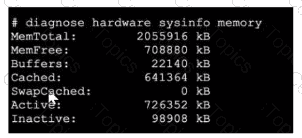
Refer to the exhibit, which shows a partial output of diagnose hardware aysinfo memory.
Which two statements about the output are true? (Choose two.)
Exhibit.
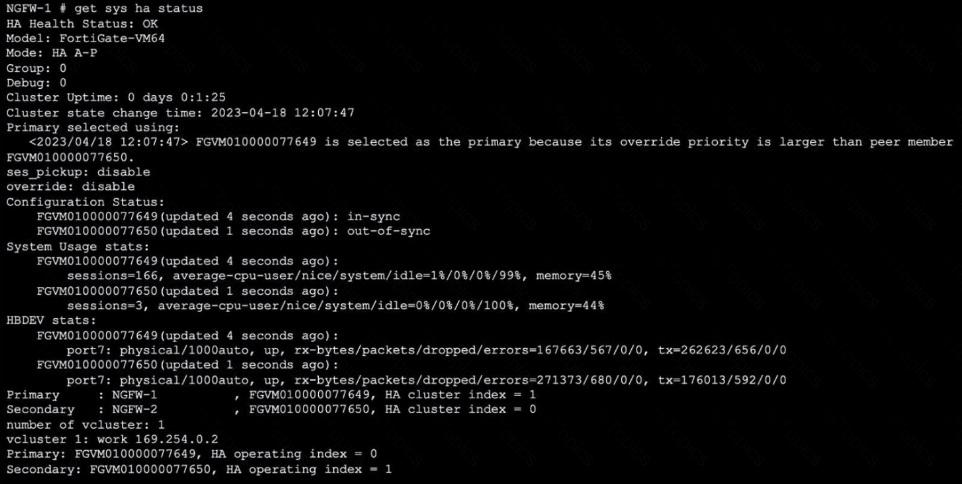
Refer to the exhibit, which shows the output of get system ha status.
NGFW-1 and NGFW-2 have been up for a week.
Which two statements about the output are true? (Choose two.)
Exhibit 1.
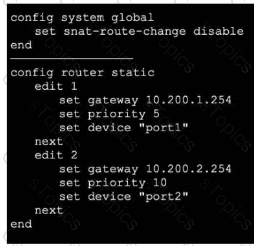
Exhibit 2.
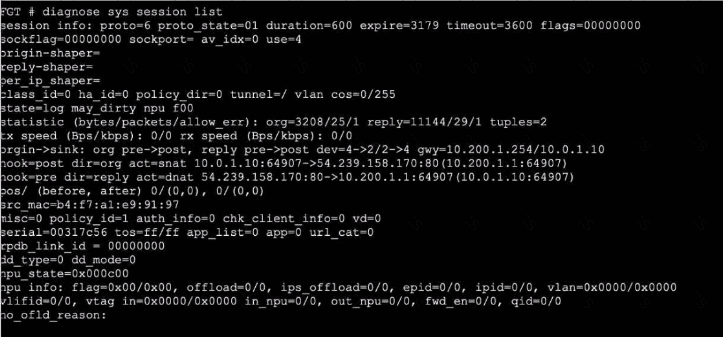
Refer to the exhibits, which show the configuration on FortiGate and partial internet session information from a user on the internal network.
An administrator would like to lest session failover between the two service provider connections.
Which two changes must the administrator make to force this existing session to immediately start using the other interface? (Choose two.)
Refer to the exhibit, which contains partial output from an IKE real-time debug.
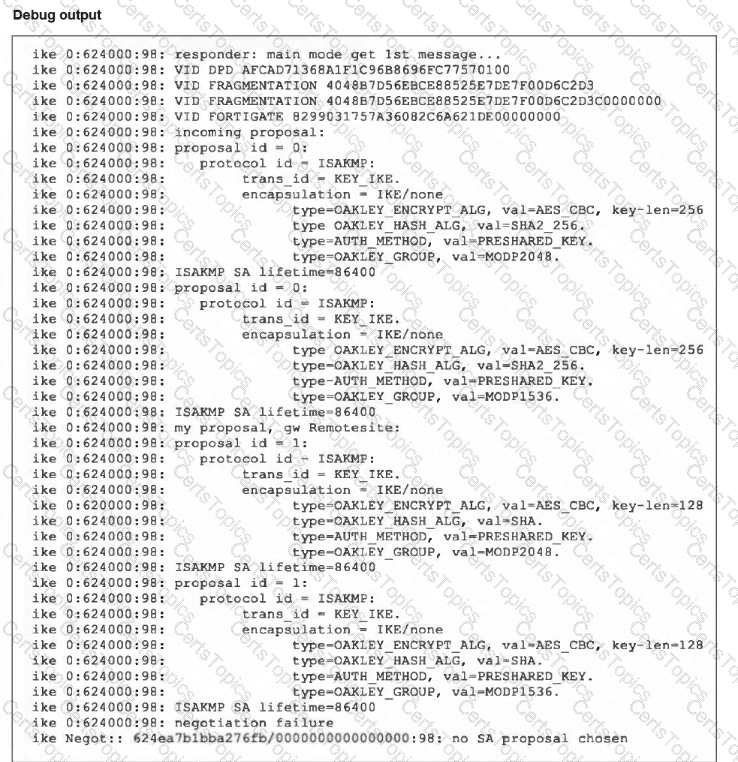
The administrator does not have access to the remote gateway.
Based on the debug output, which configuration change the administrator make to the local gateway to resolve the phase 1 negotiation error?
Refer to the exhibit showing a debug output.

An administrator deployed FSSO in DC Agent Mode but FSSO is failing on FortiGate. Pinging FortiGate from where the collector agent is deployed is successful.
The administrator then produces the debug output shown in the exhibit.
What could be causing this error message?
Refer to the exhibit, which shows a partial output of a real-time LDAP debug.

What two conclusions can you draw from the output? (Choose two.)
Refer to the exhibit, which shows the partial output of FortiOS kernel slabs.

Which statement is true?
Which exchange lakes care of DoS protection in IKEv2?
Refer to the exhibit, which a network topology and a partial routing table.
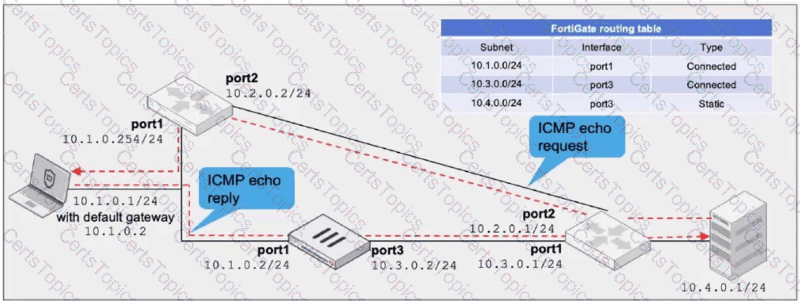
FortiGate has already been configured with a firewall policy that allows all ICMP traffic to flow from port1 to port3.
Which changes must the administrator perform to ensure the server at 10.4.0.1/24 receives the echo reply from the laptop at 10.1.0.1/24?
Exhibit.
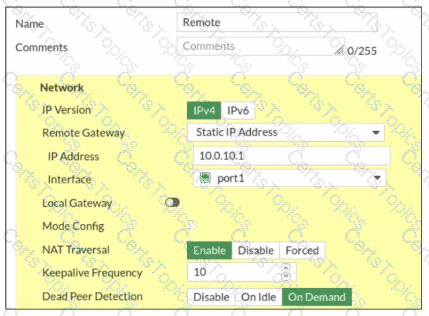
Refer to the exhibit, which contains a screenshot of some phase 1 settings.
The VPN is not up. To diagnose the issue, the administrator enters the following CLI commands on an SSH session on FortiGate:

However, the IKE real-time debug does not show any output. Why?
Exhibit.
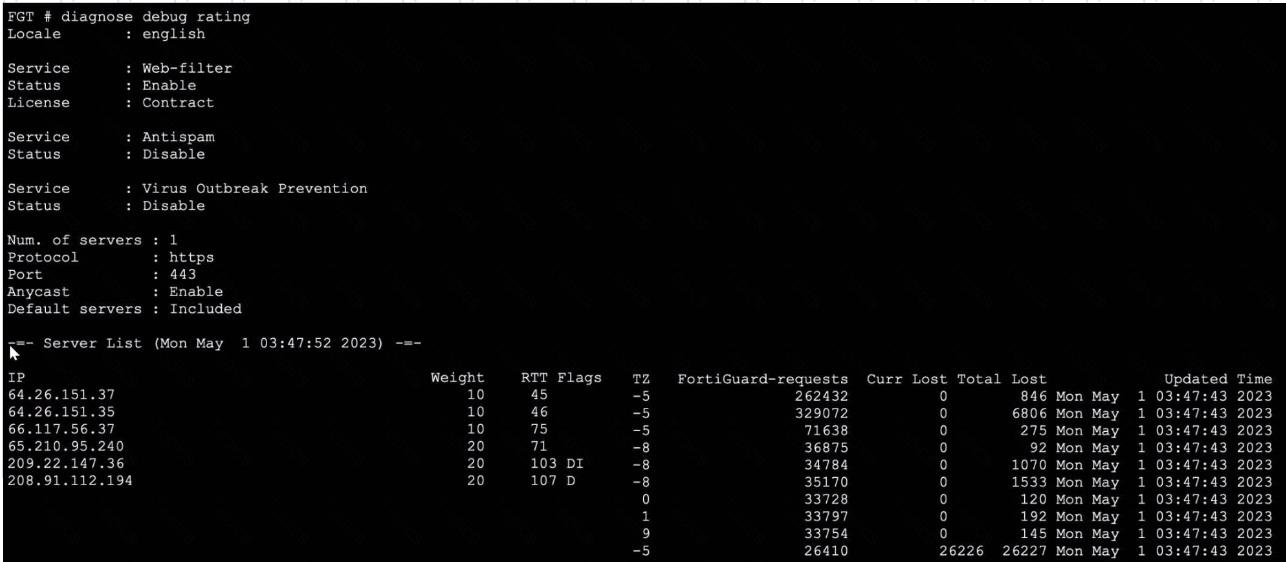
Refer to the exhibit, which shows the output of a diagnose command.
What can you conclude about the debug output in this scenario?
Refer to the exhibit, which shows the port1 interface configuration on FortiGate and partial session information for ICMP traffic.

What happens to the session information if a routing change occurs that affects this session?
In which two slates is a given session categorized as ephemeral? (Choose two.)
Refer to the exhibit, which shows a partial output of the real-time LDAP debug.

What two actions can the administrator take to resolve this issue? (Choose two.)
Refer to the exhibit, which shows a truncated output of a real-time LDAP debug.

What two conclusions can you draw from the output? (Choose two.)
Refer to the exhibits.
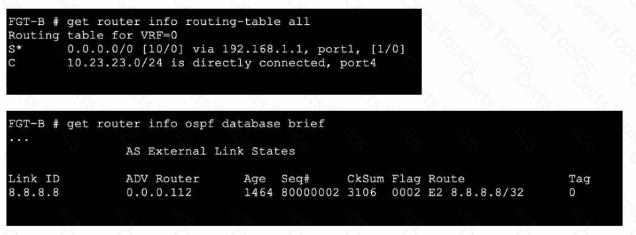
An administrator Is expecting to receive advertised route 8.8.8.8/32 from FGT-A. On FGT-B, they confirm that the route is being advertised and received, however, the route is not being injected into the routing table. What is the most likely cause of this issue?
Which two statements about Security Fabric communications are true? (Choose two.)
Exhibit.

Refer to the exhibit, which shows two entries that were generated in the FSSO collector agent logs.
What three conclusions can you draw from these log entries? {Choose three.)
Refer to the exhibit, which shows the partial output of command diagnose debug rating.

In this exhibit, which FDS server will the FortiGate algorithm choose?